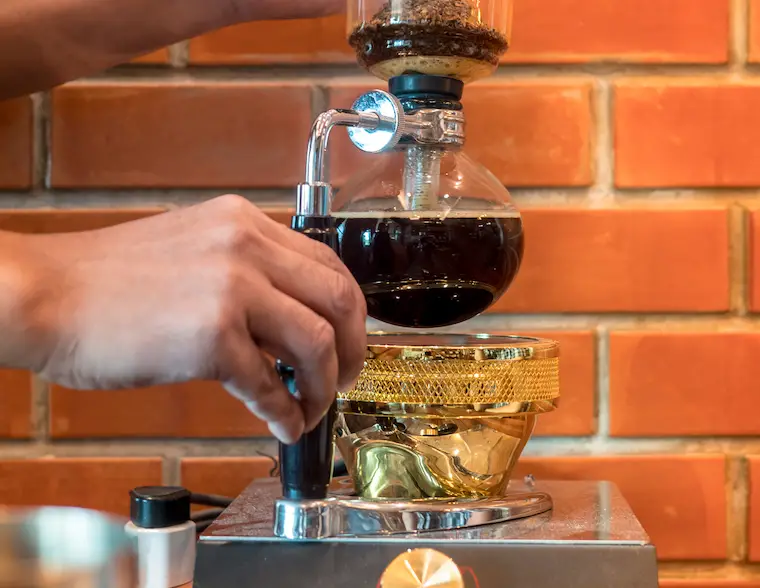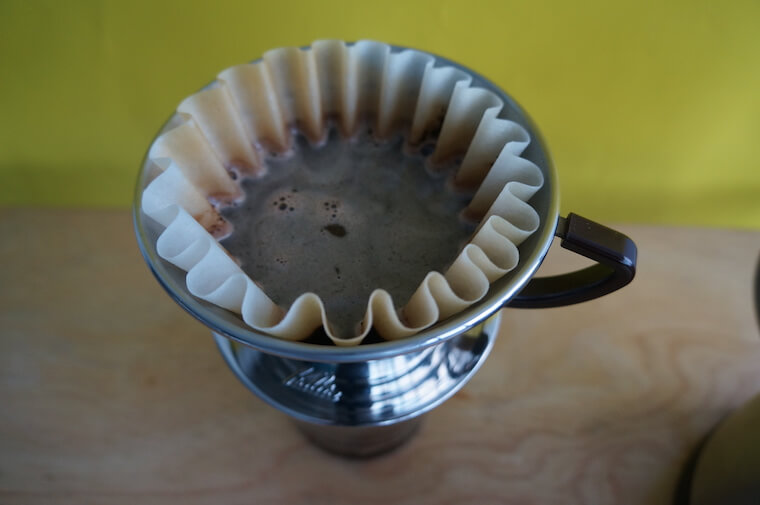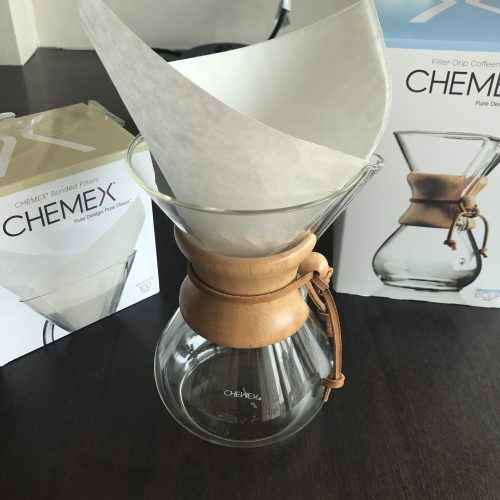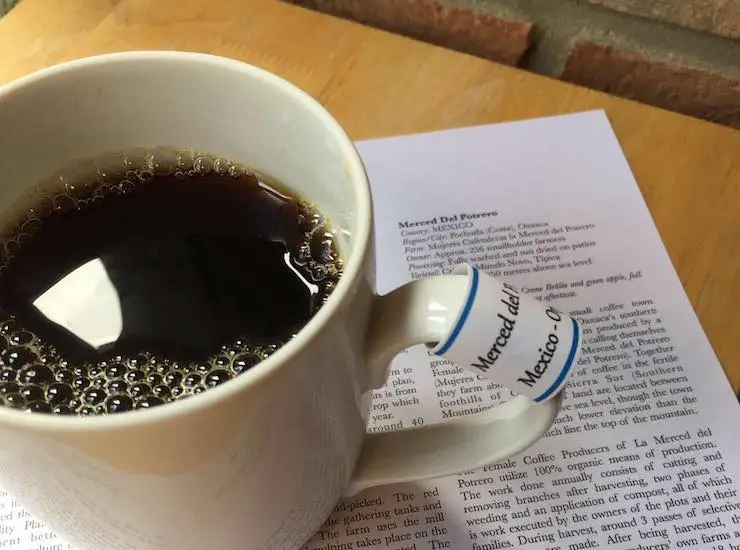What does clarity in coffee mean? The answer might be the most poorly understood thing in coffee. That I’ve come across, anyway. And a lot of folks like using the word, but can’t give a straight answer when you ask them what it means.
And you might think clarity and body are two separate things… but when it comes to coffee, they are not. This article is going to explain exactly what they are. And if you really understand how they are linked, you will be in a position to make better coffee than 98% of coffee drinkers. (And 60% of pro baristas… ha ha ha).
What do clarity and body mean in coffee?
Body — sometimes called mouthfeel — is the thickness or texture of the coffee. Clarity — more properly called flavor clarity, and sometimes complexity — is the ability to pick out the flavor in the coffee.
You can think of them as opposite ends of a scale. If you want a creamy thickness to your coffee, it comes at the expense of muddying the flavors a little. Here’s a great graphic from this post that shows a range of different coffee brewing methods and where they fall on the body vs clarity spectrum.

Clarity
Clarity, or flavor clarity, is how easy it is to distinguish flavors and tastes in the coffee. Clarity is high when the coffee solubles (dissolved solids and micro-particulates) are low in the coffee, usually as a result of being filtered out. Coffee high in flavor clarity is sometimes called clean or complex.
I like to think of high clarity as the difference between muddied cheap grocery store bourbon, and expensive smooth-tasting whiskey with subtle notes of toffee, vanilla and orange peel.
It’s important to point out there is no extra flavor in a coffee high in clarity. In fact, coffee cupping — the standard way taste testers assess a coffee — is just an immersion method with no filter.
Brew methods that are high in clarity are usually ones that use a thick filter that traps much of the coffee solubles. The Aeropress, Chemex and Siphon Coffee are all known for coffee high in clarity.
Body
Body is the thickness or texture of your coffee. It’s sometimes called mouthfeel. On a technical level, body is the presence of coffee solubles like dissolved solids and micro-particulates. The more solubles? The thicker the texture of the coffee and the more body a coffee has.
You can think of the difference between heavy whipping cream and no-fat milk. The cream is much thicker, fuller and richer. That’s a bit like body in coffee.
Brew methods that use a mesh filter like the French Press or some Pour Over brewers are known for full-bodied coffee. And Turkish coffee, which uses no filter at all, is renowned for its thick, creamy brews.
How are clarity and body related?
Clarity and body are considered opposites in some ways because increasing one decreases the other. If you want a full-bodied coffee, you need the coffee solubles and oils to make a thick, creamy texture. But this also muddies up the flavor, making it hard to have high flavor clarity.
Are they perfectly opposites? Probably not. Anyone who’s been around coffee a while knows sometimes a great coffee bean can have wonderful texture and great flavor clarity at the same time. Likewise, why do coffee cuppers taste their coffee with no filter if they want to taste the flavors?
I don’t have a full answer. To be honest, I’ve never heard anyone give a complete explanation on this, and I think the reason is because it’s a more tricky topic than can be summed up in a quick blog post. That doesn’t mean we can’t learn a thing or two, though…
What affects body and clarity in your coffee?
Factor #1: The coffee beans
Coffee beans affect the taste of your coffee more than anything else, and this is just as true when it comes to clarity and body. For example, coffee beans grown in Asia are known for their richer, full-bodied coffees.
The roasting process makes a difference, too. This article explains how coffee beans will develop more body as they are roasted, up until the second crack where they begin to thin out.
The climate, soil, farming techniques, sunlight, rainfall, shade, elevation and other factors play a role in the inherent and wonderful tastes of the coffee bean. That could be high clarity, a full body, or notes of dark chocolate or blueberries.
The best thing to do is listen to your roaster. Look for words like “full-bodied”, “creamy”, “clean” or “complex” when you’re buying coffee beans to see what to expect from your coffee in terms of body and clarity.
Factor #2: Filter
The second way of affecting clarity and body in coffee is the filter. Y’know, that you use to trap coffee grounds. Basically, the thicker the filter that is used, the higher the clarity and the lower the body.
For example, a French Press which uses a mesh strainer allows larger particles to pass through. You’ll also notice a sediment of coffee grounds in the bottom of your cup.
| No Filter | Mesh Filter | Cloth Filter | Paper Filter | Thick Paper Filter | |
| Lets everything through | Lets many thicker oils and particles through | A balance, lets finer particles through and not thicker particles | Thick filter that only lets fine particles through | Very thick filter that only lets finest particles through | |
| Methods | Turkish Coffee | French Press, Able Kone | Cold Brew, Siphon | Pour Over, Autodrip, Aeropress | Chemex |
| Body | |||||
| Clarity | |||||
 |  |  |  |  |
Is high clarity or body better?
Neither coffee high in flavor clarity or full-bodied coffee is better, they are simply different. What it really comes down to is your own tastes. Some prefer high flavor clarity, some prefer a fuller body.
Just to add on to that… Coffee rich in body does not mean you can’t notice and appreciate the flavors of the cup. Likewise, coffee high in clarity does not mean you can’t make a drink with a pleasant texture.
One little trick you can try is to brew your coffee with two methods. So let’s say you buy a new bag of coffee beans? Make a brew with your full-bodied French Press, then try a cleaner brew from a Pour Over brewer. You’ll expand your coffee knowledge, while also getting a better sense of the coffee beans, too.
And what you’ll find is the really great coffees will give great clarity and body. Keep a note if you find a coffee like this (and drop me an email!), as they are rare.
Conclusion
So there’s clarity and body for ya. Drop me a line if you didn’t understand anything, I know what a tricky topic this can be.
If learning about this kind of thing is your cup of tea (!), I’d recommend your next stop be to check out my article on reading the tasting notes in coffee. There’s a decent amount in there about body and clarity too, and there’s plenty of good coffee knowledge if that’s what you’re after.



1 Comment
this was quite helpful and does clear up some things I wasn’t sure about. One thing I still don’t know is for espresso, does that brew method favour body or does it favour clarity?
Or for espresso, is it really both depending more on the actual bean itself darker = more body, lighter = more clarity?